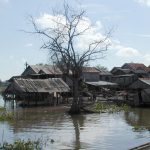Patient rights
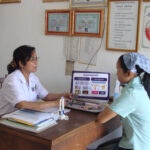
Access to quality healthcare is fundamental to enhancing citizens’ livelihoods and advancing towards more sustainable growth and development in countries all over the world. Along with increasing public demand for better health infrastructure and adequate access to healthcare services, many countries face the need to ...
Industrial mining
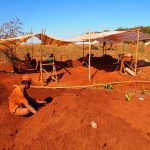
There is no large industrial-scale extraction of minerals carried out in Cambodia yet, but many exploration licenses have been granted and some mining companies have reported promising finds of minerals such as gold. Today companies from China, Korea, Vietnam, Australia and elsewhere are exploring for ...
Development policies and administration
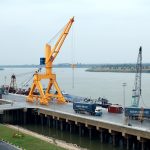
Products from Vietnam arrive at the Phnom Penh Autonomous Port in Kandal province. Photo by World Bank Photo Collection, taken on 23 February 2013. Licensed under CC BY-NC-ND 2.0The Comprehensive Cambodian Peace Agreement, commonly referred to as the Paris Agreement, is seen as the beginning ...
Civil society

The launch event of a project improving the delivery of public services through ICT in Svay Rieng province, Cambodia. Photo by the ODC team, taken on 28 June 2017. Licensed under a CC BY-SA 4.0.Civil society, representing the interests of ordinary citizens, is the part of ...
Ethnic minorities and indigenous people
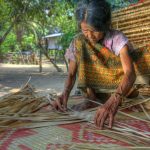
According to the Kingdom of Cambodia’s 2019 general population census, the total Cambodian population is 15,552,211 (51.31% of females).85 By 2021, the population increased to 16,589,023.86 Vietnamese, Chinese, Chams and other minorities also live in the country. Indigenous ethnic groups known as “Khmer Loeu” live ...
Renewable energy production
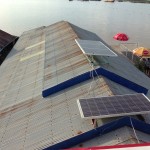
Renewable sources of energy include biofuels, solar, wind, tidal and geothermal energy. Fossil fuels such as petroleum or coal are not renewable. ...
Agricultural production

Rice field in Cambodia’s countryside. Photo by fmpgoh, taken on 15 July 2009. Licensed under CC BY-NC-ND 2.0The main products from the agriculture sector are rice, rubber, corn, vegetables, cashews and cassava. Unprocessed agricultural exports were projected to be more than 90 percent of total agricultural ...
Trade policy and regulation
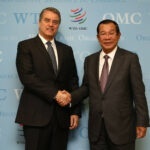
Cambodian Prime minister Hun Sen were at the Aid for Trade Global Review 2019. Photo by World Trade Organization (WTO), taken on 03 July 2019. Licensed under CC BY-SA 2.0.International trade plays an essential role in improving Cambodia’s growth, employment and business opportunities. Trade policy ...
Landmines UXO and demining
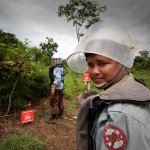
Cambodia is one of the countries most affected by land mines and explosive remnants of war as a result of its tumultuous history. The country is working with a variety of partners to demine the country by 2019. ...
Animals

Cambodian animals are state property under Article 48 of the Forestry Law of 2002. This places the Forestry Administration (FA) in charge of research programs and conservation duties. The FA carries this out through its Department of Wildlife and Biodiversity. Conservation programs in the field ...
Water resources
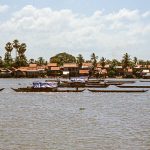
Geographically, Cambodia is rich in rivers and water bodies. These water resources play an important role in economic and social development, particularly in agriculture, industry, environmental protection and tourism sectors. ...
Agricultural commodities, processing and products
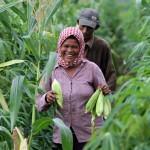
Farmers harvest corn from their farms, Cambodia. Photo by World Bank/Chhor Sokunthea, taken on 17 July 2013. Licensed under CC BY-NC-ND 2.0Key agricultural commodities and products include rice, rubber, corn (maize), vegetables and fruit, and cassava (tapioca). more than 90 percent of Cambodia’s agricultural exports ...
Banking and financial services policy and regulation
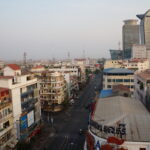
Political stability and economic growth of all sectors have played vital role in building the public and foreign investors’ confidence and maintaining the safety and soundness of banking system in Cambodia. The banking sector continues to have substantial growth as it shares 82.2% in the ...
Forest cover reporting
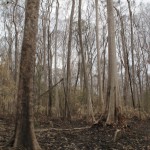
Forest cover is the area of land covered by tree canopy. Measuring and reporting this can show the different types of forest that exist and the areas of each, and how these areas change over tiMe. ...
Fish farming and aquaculture
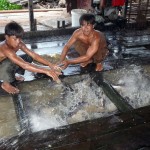
Fish farmers operating cage culture, Cambodia. Photo by O. Joffre/WorldFish, taken on 3 October 2009. Licensed under CC BY-NC-ND 2.0.Aquaculture production has grown significantly. In 2012 it stood at 74,000 tonnes, or almost 11 percent of total fishery production. By 2016 it had grown to ...
SDG 6 Clean water and sanitation
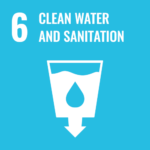
Sustainable Development Goal 6 has 8 targets and 11 indicators, which will be used to drive action towards achieving universal access to safely managed water and sanitation and appropriate management of water resources.348 SDG 6 recognizes that sustainably managing water goes beyond providing a safe water ...
Extractive industries
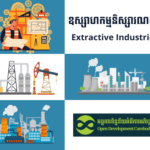
Extractive industries include mining and mineral sectors, natural gas and oil exploration, petroleum refineries, and quarrying for construction resources such as sand, stone, and gravel. Cambodia’s extractive resources have gone largely untapped, while these resources are geographically identifiable. French and Chinese geologists have been indicated ...
Non-renewable energy production
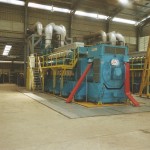
Non-renewable energy sources are chiefly fossil fuels such as coal, diesel, oil and gas. They provide most of Cambodia’s locally-produced electrical supply – in 2011 diesel and heavy fuel oil generators provided 89% of local electricity generation. ...
Court monitoring
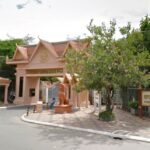
Respect for strong values is the key to citizens’ trust in their courts.460 The international values recognized for judges are independence and impartiality, integrity, equality of treatment, diligence and competence. A judge cannot both decide a case and have a personal interest in its resolution. ...


